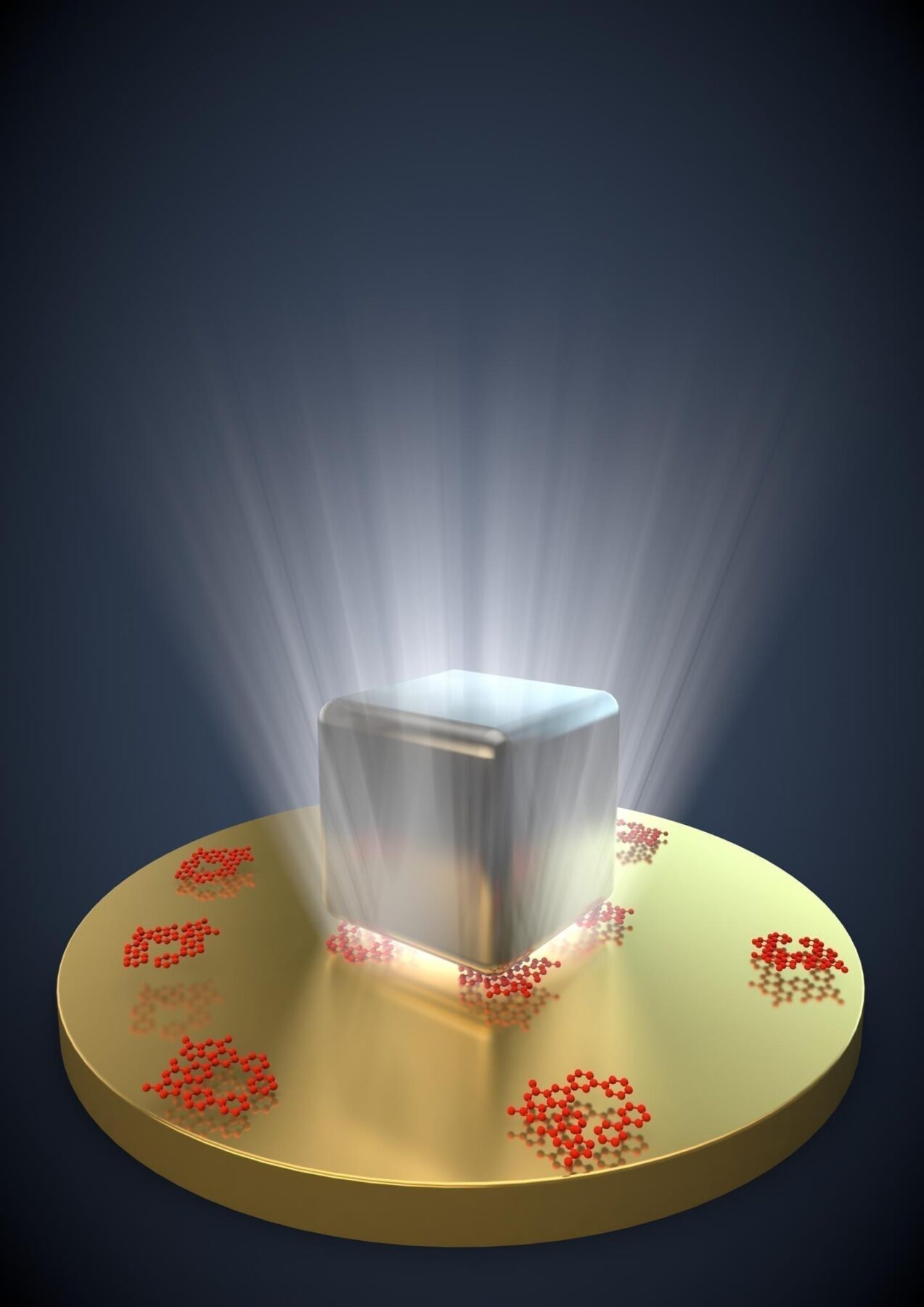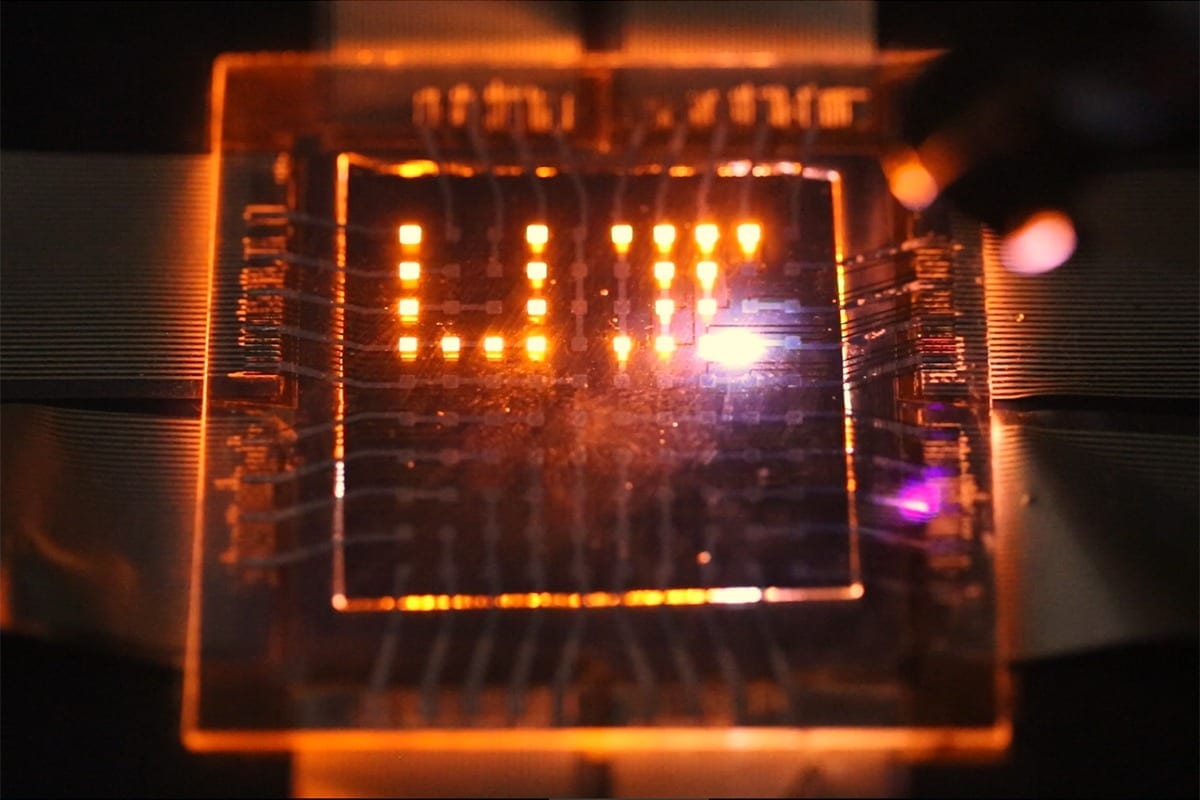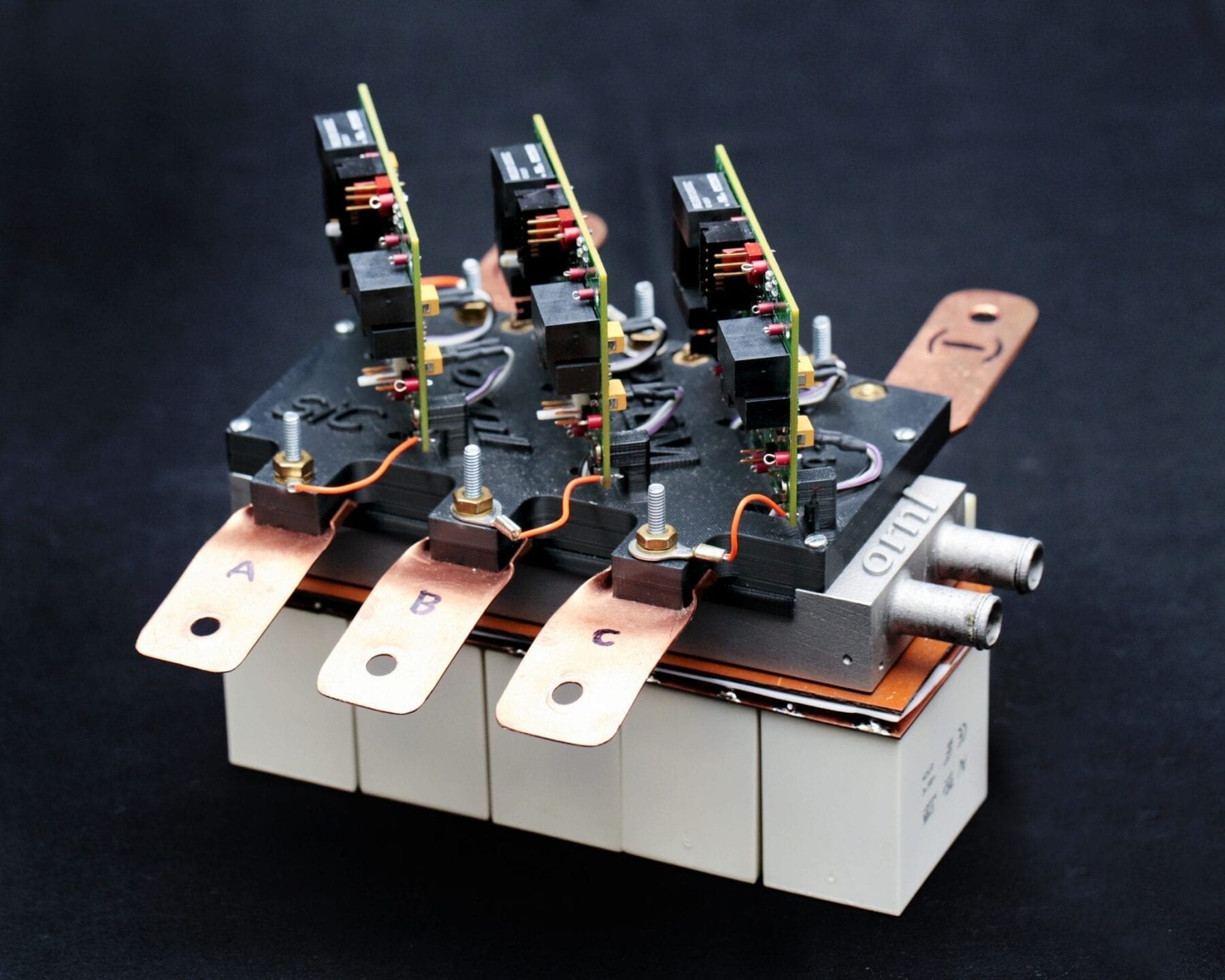
Credit: Gleb Akselrod, Duke University
“If we can precisely place molecules like this, it could be used in many more applications than just fast LEDs,” said Akselrod. “We could also make fast sources of single photons that could be used for quantum cryptography. This technology would allow secure communication that could not be hacked — at least not without breaking the laws of physics.”
Duke University researchers have made fluorescent molecules emit photons of light 1,000 times faster than normal — setting a speed record and making an important step toward realizing superfast light emitting diodes (LEDs) and quantum cryptography.
This year’s Nobel Prize in physics was awarded for the discovery of how to make blue LEDs, allowing everything from more efficient light bulbs to video screens. While the discovery has had an enormous impact on lighting and displays, the slow speed with which LEDs can be turned on and off has limited their use as a light source in light-based telecommunications.
In an LED, atoms can be forced to emit roughly 10 million photons in the blink of an eye. Modern telecommunications systems, however, operate nearly a thousand times faster. To make future light-based communications using LEDs practical, researchers must get photon-emitting materials up to speed.
In a new study, engineers from Duke increased the photon emission rate of fluorescent molecules to record levels by sandwiching them between metal nanocubes and a gold film.
The results appear online October 12 in Nature Photonics.
“One of the applications we’re targeting with this research is ultrafast LEDs,” said Maiken Mikkelsen, an assistant professor of electrical and computer engineering and physics at Duke. “While future devices might not use this exact approach, the underlying physics will be crucial.”
Mikkelsen specializes in plasmonics, which studies the interaction between electromagnetic fields and free electrons in metal. In the experiment, her group manufactured 75-nanometer silver nanocubes and trapped light between them, greatly increasing the light’s intensity.
When fluorescent molecules are placed near intensified light, the molecules emit photons at a faster rate through an effect called Purcell enhancement. The researchers found they could achieve a significant speed improvement by placing fluorescent molecules in a gap between the nanocubes and a thin film of gold.
To attain the greatest effect, Mikkelsen’s team needed to tune the gap’s resonant frequency to match the color of light that the molecules respond to. With the help of co-author David R. Smith, the James B. Duke Professor and Chair of Electrical and Computer Engineering at Duke, they used computer simulations to determine the exact size of the gap needed between the nanocubes and gold film to optimize the setup.
The Latest on: Superfast LEDs
[google_news title=”” keyword=”Superfast LEDs” num_posts=”10″ blurb_length=”0″ show_thumb=”left”]
via Google News
The Latest on: Superfast LEDs
- Apple iPad Pro (2024) vs iPad Pro (2022): Which flagship tablet should you buy?on May 8, 2024 at 10:59 pm
Apple iPad Pro 2024 vs iPad Pro 2022? We break down the differences like display, performance, and Apple Pencil to help you pick the best.
- Young Poles led a political revolution. Now they need to learn patience.on May 8, 2024 at 1:05 pm
During their eight years in office, Law and Justice raised social insurance payments which particularly impacted younger Poles like the 32-year-old Mr. Dryżałowski, rolled back civil rights including ...
- Hisense U8N review: As close to OLED as it getson May 8, 2024 at 8:00 am
The Hisense U8N continues to put pressure on the competition with intense brightness, deep blacks, and vibrant color.
- People Who Attended Weddings Of Couples Who Split Up Super Fast Are Sharing What Happened, And It's Chaossssson May 5, 2024 at 4:16 pm
"A friend of mine found out a few days after her wedding that her husband hadn't been away for work a few months before their marriage as he claimed, but was actually with his side chick, who was ...
- Generative AI Is Coming for Video Games. Here's How It Could Change Gamingon May 4, 2024 at 2:06 pm
Game developers are enthusiastic, skeptical, cautious and worried about the new technology's impending impact on the gaming industry.
- Ferrari 12Cilindri debuts with stunning looks, 819 hpon May 2, 2024 at 11:45 pm
Ferrari's successor to the 812 Superfast boasts a new platform, a naturally aspirated V-12, and gorgeous looks inspired by the 365 GTB/4 Daytona.
- Ferrari keeps V12 tradition alive with 12cilindri coupe and spideron May 2, 2024 at 10:18 pm
Even though the supercar brand is electrifying with several PHEV models, the replacement for the 812 Superfast has a naturally aspirated non-hybrid V12 engine.
- LayerX Security Raises $26M for its Browser Security Platform, Enabling Employees to Work Securely from Any Browser, Anywhereon May 2, 2024 at 10:25 am
Press Release LayerX, pioneer of the LayerX Browser Security platform, today announced $26 million in Series A funding led by Glilot+, the early-growth fund of Glilot Capital Partners, with ...
- Daughter pleads guilty in Marion neglect case that led to mother’s deathon April 30, 2024 at 2:00 pm
Amanda Swartz pleaded guilty to first-degree felony involuntary manslaughter for neglect that led to the death of her 68-year-old mother. Woman missing for nearly four decades after leaving for fake ...
- Denny Hamlin edges Kyle Larson at Dover for third NASCAR Cup Series win of 2024on April 28, 2024 at 4:57 pm
Denny Hamlin flexed his muscle in the second half of the Würth 400 Sunday afternoon at Dover to score his third NASCAR Cup Series win of 2024.
via Bing News











